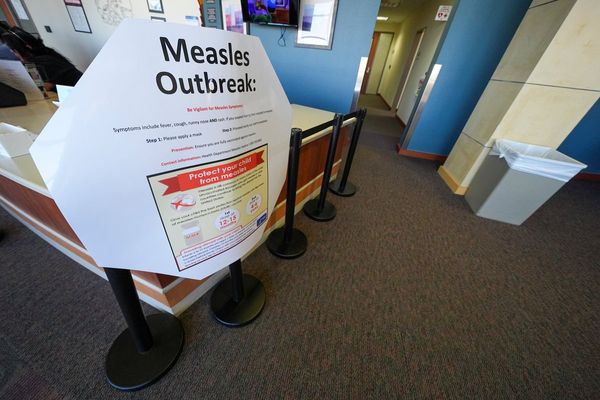
Imagine living with pain every day for months, or even years — pain that is so intrusive, it disrupts every day of your life.
Unfortunately, this is the daily reality of millions of people living with chronic pain. And all too often, they find their condition being stigmatized or even denied outright.
As a doctoral student in the epidemiology of chronic pain, I have the opportunity to work with patient partners. Given the high prevalence and multiple impacts of this disease, it is high time we started working to change attitudes and confront the prejudices that surround it.
Essential pain and acute pain
Before discussing chronic pain, let’s start at the beginning. Is pain always a negative thing? Of course not. Pain is essential to our proper functioning. It acts as an alarm system to warn us of danger.
For example, if we were to accidentally put our hand on a hot stove top, a pain message would be sent to our brain. Before we even had time to think about it, we would remove our hand from the hot surface, avoiding an intense burn in the process. This pain provides us with the reflexes we need in order to avoid the worst situations.
Pain can also last a little longer. This is the case, for example, after an injury, an operation or an infection. This pain will often resolve itself after a normal healing cycle or disappear with the help of treatment. This is called acute pain. Short-term pain like this is perceived more as a symptom.
Chronic pain, a disease with multiple impacts
When pain persists beyond the normal healing time, it is no longer considered simply a symptom, but a disease in its own right. This is called chronic pain. Chronic pain is defined as pain that persists for a minimum of three months. Yet, for the vast majority of people living with this disease, the pain persists for several years.

In these people, the pain message is somehow missing. It is no longer present to warn us of dangers, but becomes a burden on its own. Chronic pain can occur as a result of cancer, an accident, or after surgery. Unfortunately, sometimes we are unable to find the cause. This makes it difficult to treat.
Although this disease is not widely recognized, it is estimated to affect about 20 per cent of the Canadian population. Considering that our population in 2022 is estimated to be close to 39 million, this would mean that approximately 7.5 million people are living with chronic pain. For the purpose of comparison, 7.5 million Canadians is equivalent to the entire population of Québec. It’s an impressive and worrisome number.
In addition to affecting a large portion of the population, chronic pain causes more than just physical pain. The disease affects the daily functioning, psychological well-being, quality of life, social life and work of the people afflicted by it.
Imagine having so much pain that it reduces your ability to work, play with your children, see your friends or concentrate and even affects your ability to carry out everyday tasks. Despite the person’s desire to stay active, the body just can’t keep up. So it’s not surprising that consequences such as fatigue, frustration, sadness, anxiety and depression follow. The constant overlap between physical, psychological and social difficulties creates deep distress in this population.
A stigmatized disease
Despite the significant impacts associated with it, chronic pain remains largely stigmatized. Indeed, negative attitudes and beliefs that people living with chronic pain have become dependent on their medications, that they are exaggerating the severity of their condition, are just lazy or do not want to help themselves are widespread.
So, knowing the multiple consequences and prevalence of chronic pain, why is there still so much prejudice and stigma towards those who suffer from it?
The question remains unanswered. For some, what we cannot see simply does not exist. Because pain is an experience that varies from person to person, because we don’t have a specific tool for detecting it or because we can’t necessarily see it, pain can seem invisible. We have a harder time feeling sympathy or understanding for things that cannot be explained medically with medical tests or X-rays.
How to become an ally
So, despite the many explanations offered by patients, they often have to deal with prejudices from health professionals, their entourage or the general population. Many people living with chronic pain feel that their pain is not understood by their friends, family, employers or even their health-care professionals, which adds to their feelings of helplessness, sadness and anger. In addition to dealing with the difficulties that chronic pain brings, these comments place an inestimable burden on sufferers.
Francine, who has been living with chronic pain for 15 years, regularly receives these types of comments from her family and friends:
Well, you’ve only been walking for 10 minutes, you can do more. Just try harder.
Sylvie, who has lived with chronic pain for 17 years, has to deal with her doctor’s comments:
“You are the only patient I have not been able to relieve with cortisone shots in 40 years, so perhaps you should consult a psychologist instead.
These phrases, which can sound harmless to some, are often loaded with meaning for those who hear them on a daily basis. Accepting chronic pain as a disease is an important and difficult step. It should not be coupled with such pejorative comments.
Without being experts in the field, we can all play a role, in one way or another, in the lives of these people. Offering an active and understanding ear, not making quick judgments and acknowledging their condition is already a huge step in the right direction.
Support and communication with those around you are elements that should not be neglected and can certainly make a positive difference.
This article was written in collaboration with Sylvie Beaudoin and Christian Bertrand, patient partners.
Marimée Godbout-Parent has received funding from the Canadian Institutes of Health Research (CIHR).
This article was originally published on The Conversation. Read the original article.







